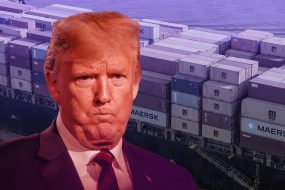China’s economy is currently facing significant challenges, including sluggish consumer spending, a shaky property market, and persistent deflationary pressures. As the government aims for a growth target of around 5% this year, it is crucial to explore effective strategies to revitalize the economy. Here are some potential solutions that could help turn things around.
1. Implementing Aggressive Fiscal Policies
Increase Government Spending
One of the most immediate actions the Chinese government can take is to ramp up fiscal spending. This could involve issuing special sovereign bonds, estimated at around 2 trillion yuan ($284 billion), to fund infrastructure projects and consumer subsidies. Such measures would directly stimulate economic activity and consumer confidence.
Targeted Support for Key Sectors
The government should focus on sectors that can drive growth, such as technology, green energy, and healthcare. By providing targeted subsidies and incentives, the government can encourage investment and innovation in these critical areas, which could lead to job creation and increased consumer spending.

2. Enhancing Monetary Policy
Interest Rate Cuts
The People’s Bank of China (PBOC) has already begun to cut interest rates and reduce reserve requirements for banks. Continuing this trend could lower borrowing costs for businesses and consumers, encouraging spending and investment.
Liquidity Support
Providing liquidity support to banks can help ensure that credit flows to businesses, particularly small and medium-sized enterprises (SMEs) that are often the backbone of the economy. This could involve direct lending programs or guarantees for loans to stimulate business activity.

3. Boosting Consumer Confidence
Addressing Housing Market Issues
The property sector is a significant contributor to China’s economic woes. Implementing measures to stabilize housing prices, such as easing mortgage requirements and providing incentives for home purchases, could help restore consumer confidence.
Promoting Consumer Spending
The government could introduce measures to encourage consumer spending, such as tax rebates or direct cash transfers to households. For example, a monthly allowance for families with children could stimulate demand for goods and services.
4. Strengthening International Trade Relations
Diversifying Export Markets
China should work on diversifying its export markets to reduce reliance on any single country or region. Strengthening trade relationships with emerging markets could provide new opportunities for Chinese goods and services.

Addressing Trade Tensions
Engaging in diplomatic efforts to ease trade tensions, particularly with the United States, could help stabilize the economic environment and restore confidence among businesses and investors.
5. Fostering Innovation and Technology
Investment in R&D
Increasing investment in research and development (R&D) can drive innovation and improve productivity. The government should provide incentives for companies to invest in new technologies and processes that can enhance competitiveness.
Supporting Startups
Creating a favourable environment for startups through grants, tax incentives, and access to funding can stimulate entrepreneurship and job creation. Then, this could be particularly effective in high-growth sectors like technology and renewable energy.
Conclusion
China’s economy is at a critical juncture, and decisive action is needed to address the challenges it faces. By implementing aggressive fiscal and monetary policies, boosting consumer confidence, strengthening international trade relations, and fostering innovation, China can set itself on a path to recovery. The time for bold measures is now, as the country seeks to navigate through these turbulent economic waters.














